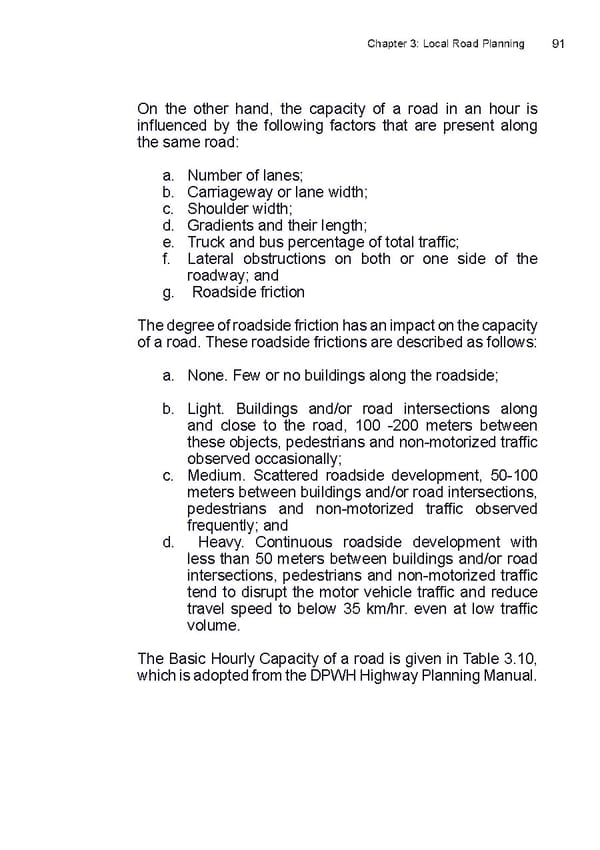Chapter 3: Local Road Planning 91 On the other hand, the capacity of a road in an hour is influenced by the following factors that are present along the same road: a. Number of lanes; b. Carriageway or lane width; c. Shoulder width; d. Gradients and their length; e. Truck and bus percentage of total traffic; f. Lateral obstructions on both or one side of the roadway; and g. Roadside friction The degree of roadside friction has an impact on the capacity of a road. These roadside frictions are described as follows: a. None. Few or no buildings along the roadside; b. Light. Buildings and/or road intersections along and close to the road, 100 -200 meters between these objects, pedestrians and non-motorized traffic observed occasionally; c. Medium. Scattered roadside development, 50-100 meters between buildings and/or road intersections, pedestrians and non-motorized traffic observed frequently; and d. Heavy. Continuous roadside development with less than 50 meters between buildings and/or road intersections, pedestrians and non-motorized traffic tend to disrupt the motor vehicle traffic and reduce travel speed to below 35 km/hr. even at low traffic volume. The Basic Hourly Capacity of a road is given in Table 3.10, which is adopted from the DPWH Highway Planning Manual.
 Local Road Management Manual Page 91 Page 93
Local Road Management Manual Page 91 Page 93